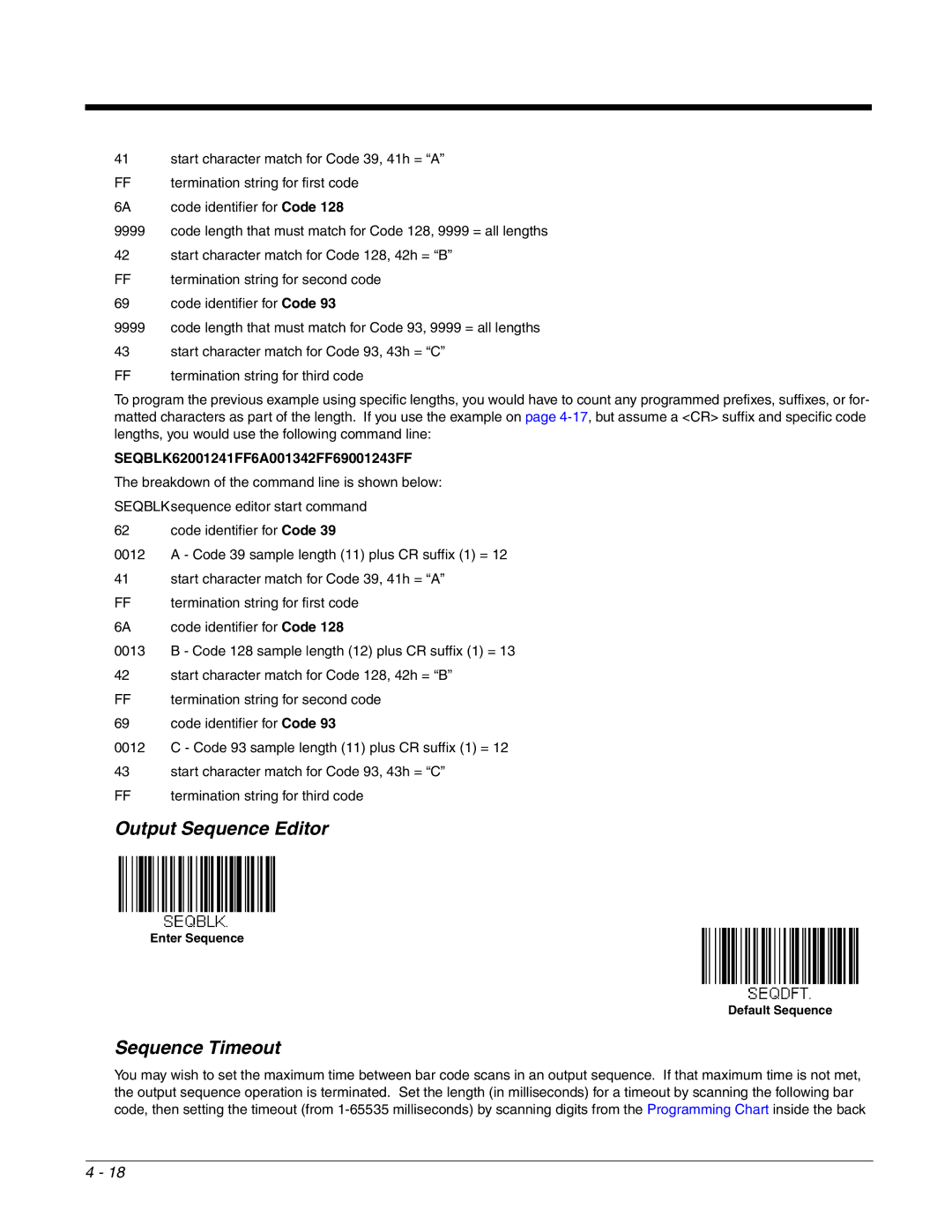
41start character match for Code 39, 41h = “A”
FF termination string for first code
6A code identifier for Code 128
9999 code length that must match for Code 128, 9999 = all lengths
42start character match for Code 128, 42h = “B”
FF termination string for second code
69code identifier for Code 93
9999 code length that must match for Code 93, 9999 = all lengths
43start character match for Code 93, 43h = “C”
FF termination string for third code
To program the previous example using specific lengths, you would have to count any programmed prefixes, suffixes, or for- matted characters as part of the length. If you use the example on page
SEQBLK62001241FF6A001342FF69001243FF
The breakdown of the command line is shown below:
SEQBLKsequence editor start command
62 code identifier for Code 39
0012 A - Code 39 sample length (11) plus CR suffix (1) = 12
41start character match for Code 39, 41h = “A”
FF termination string for first code
6A code identifier for Code 128
0013 B - Code 128 sample length (12) plus CR suffix (1) = 13
42start character match for Code 128, 42h = “B”
FF termination string for second code
69code identifier for Code 93
0012 C - Code 93 sample length (11) plus CR suffix (1) = 12
43start character match for Code 93, 43h = “C”
FF termination string for third code
Output Sequence Editor
Enter Sequence
Default Sequence
Sequence Timeout
You may wish to set the maximum time between bar code scans in an output sequence. If that maximum time is not met, the output sequence operation is terminated. Set the length (in milliseconds) for a timeout by scanning the following bar code, then setting the timeout (from
4 - 18
